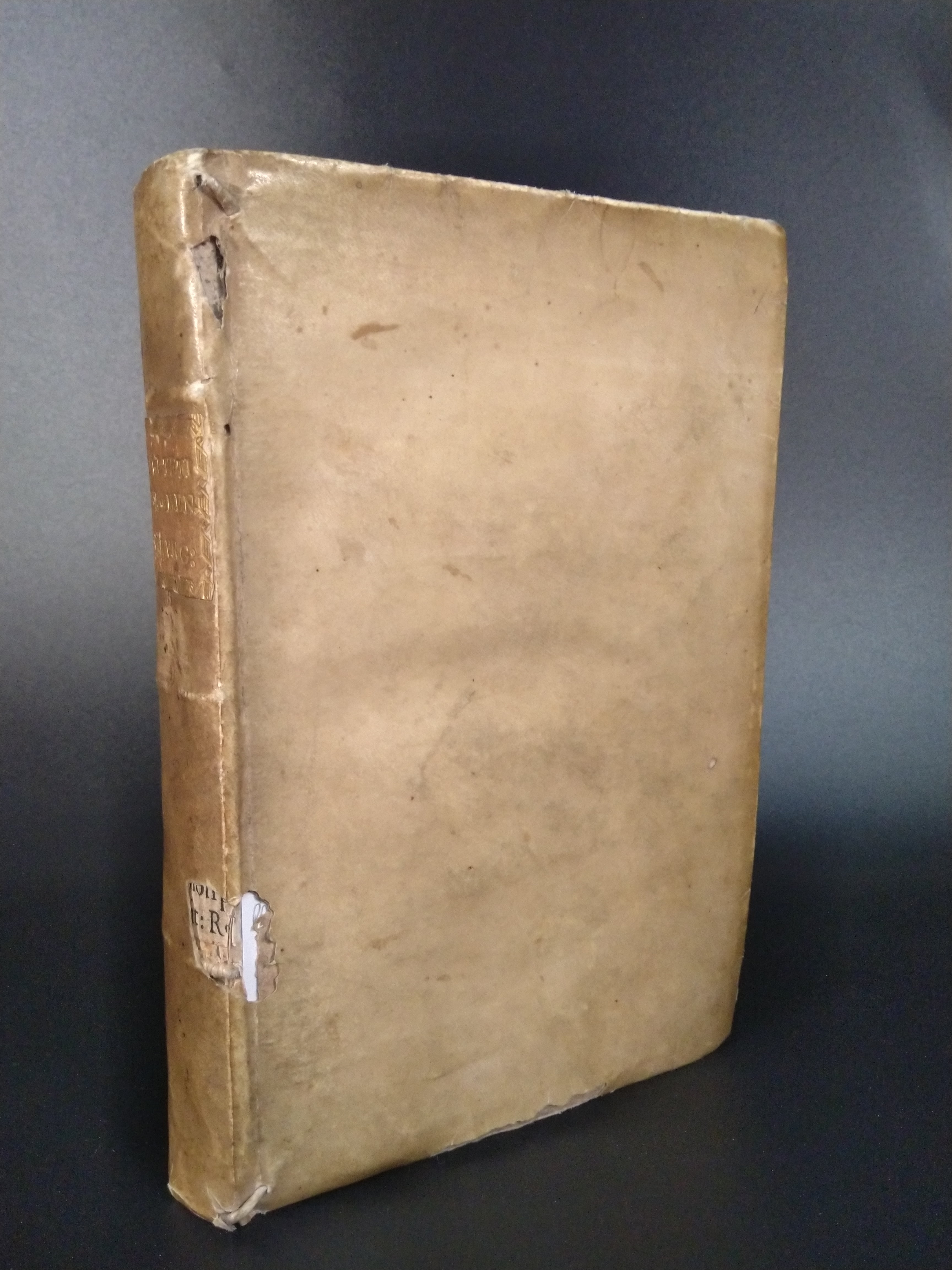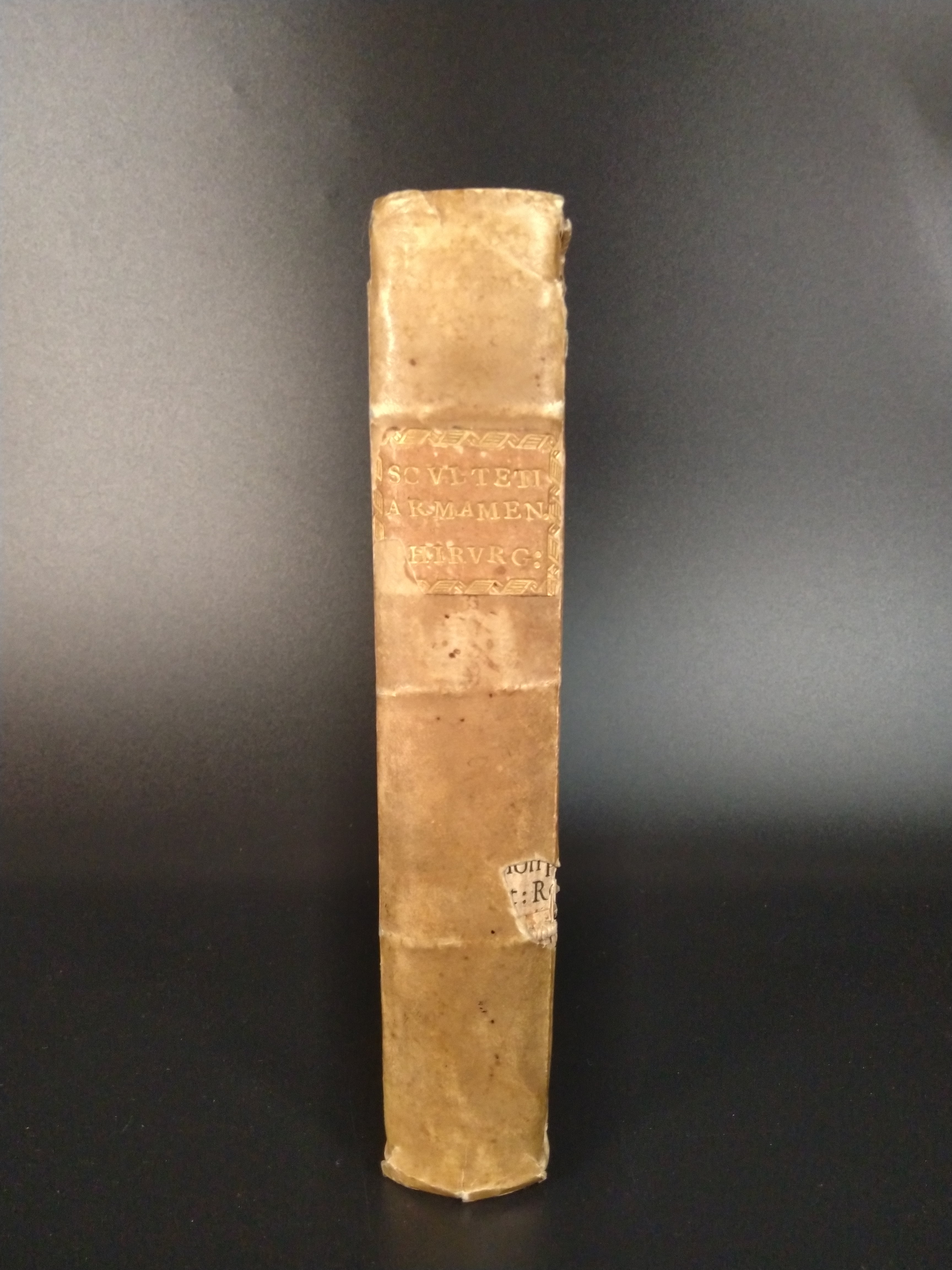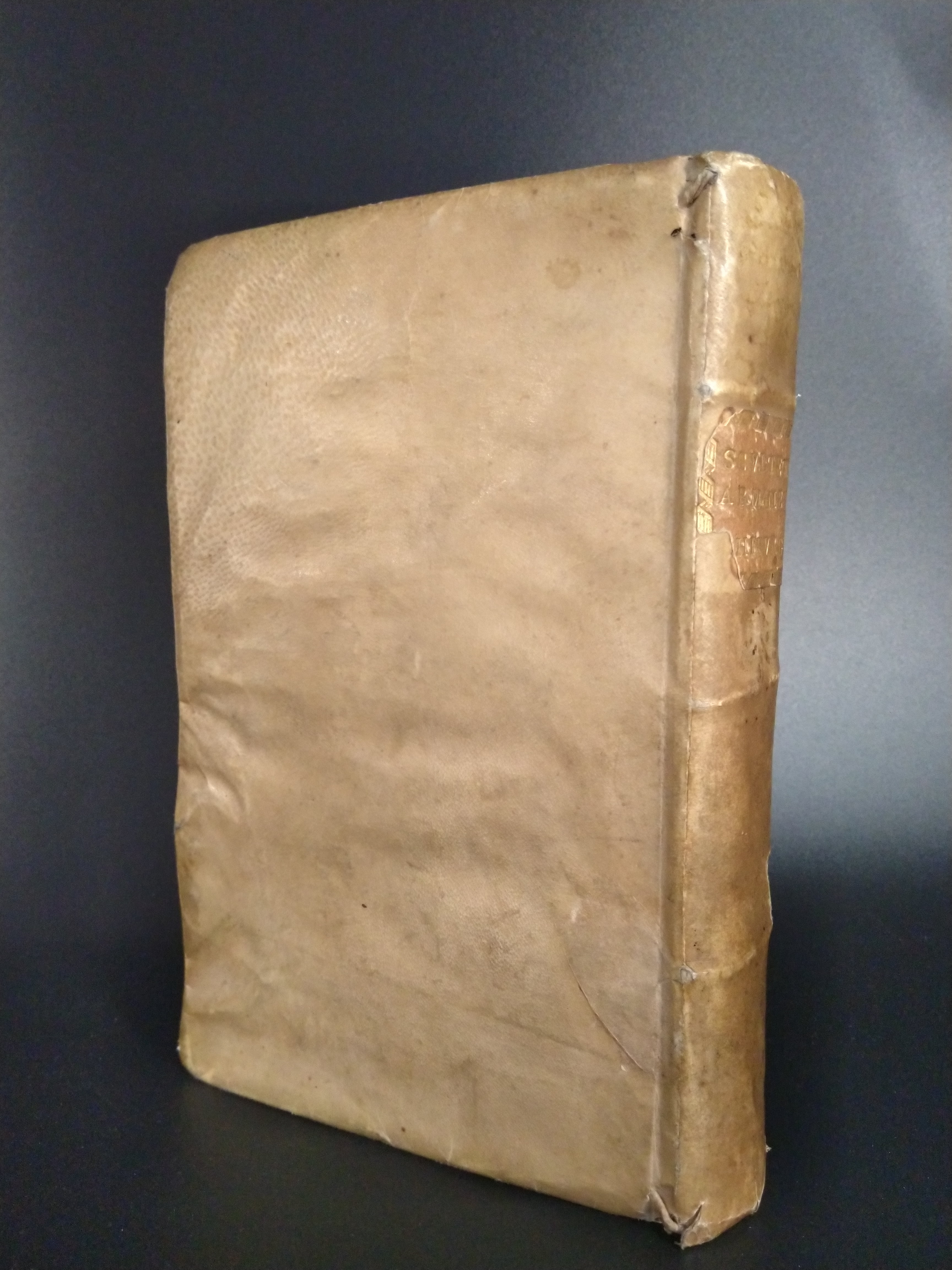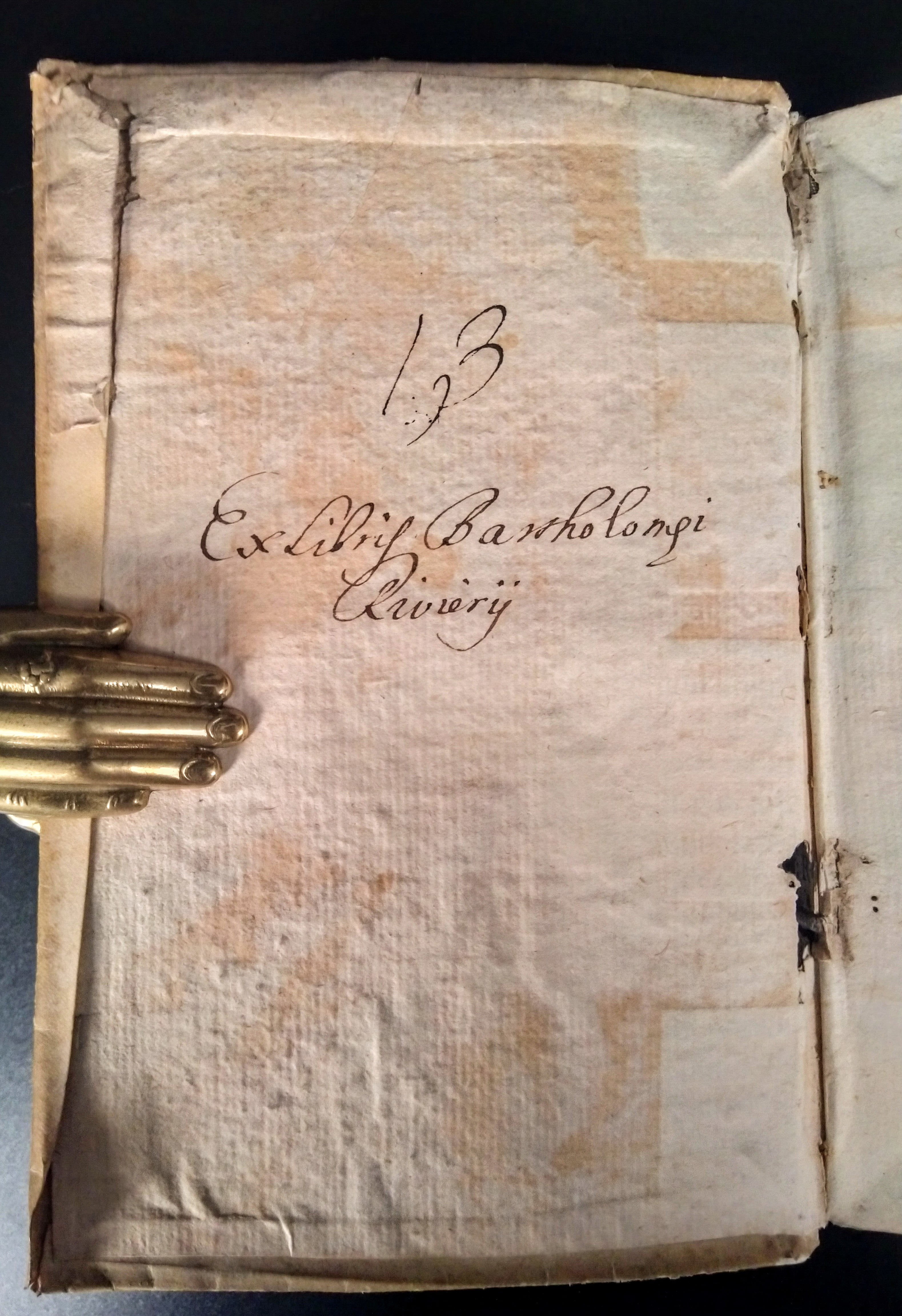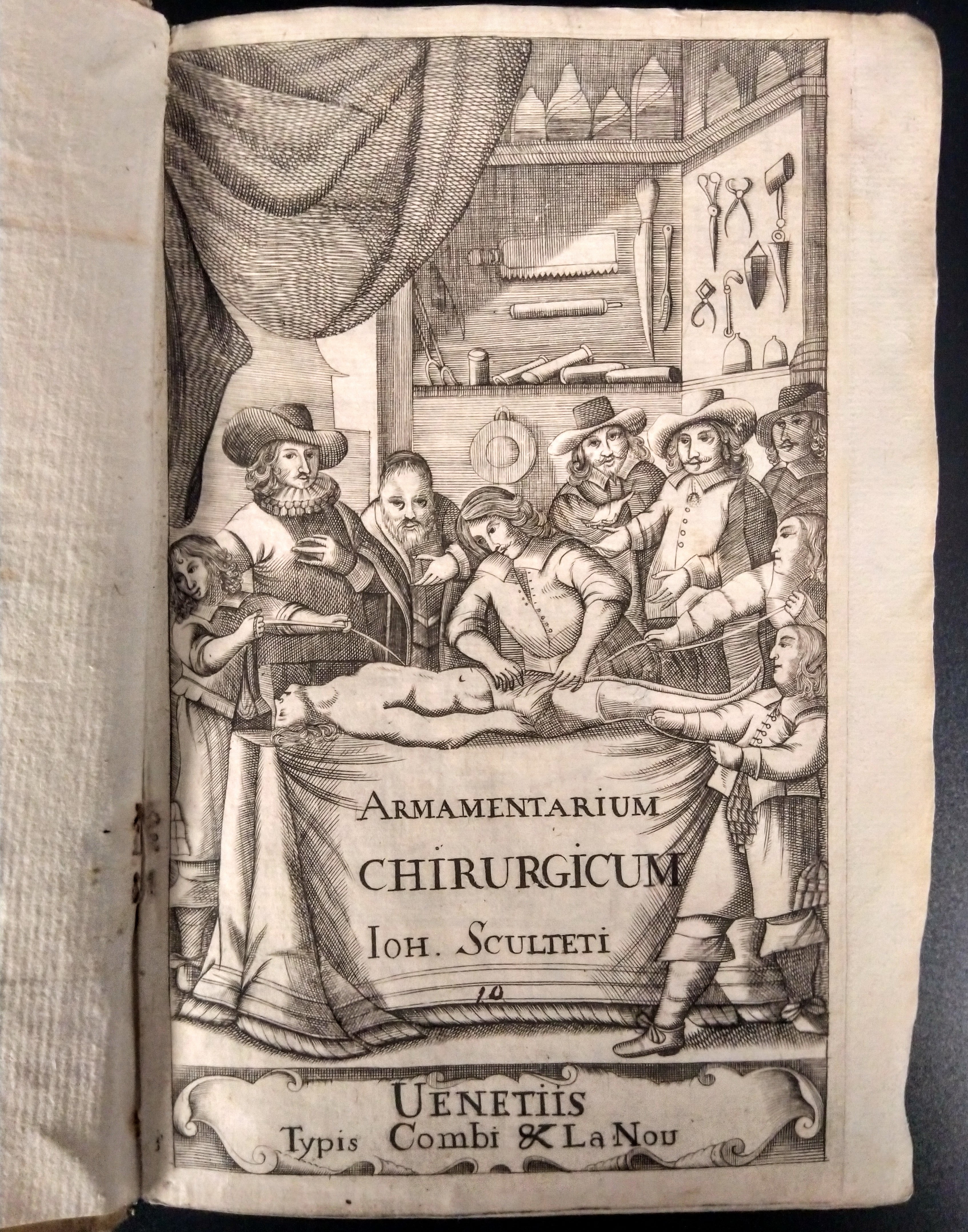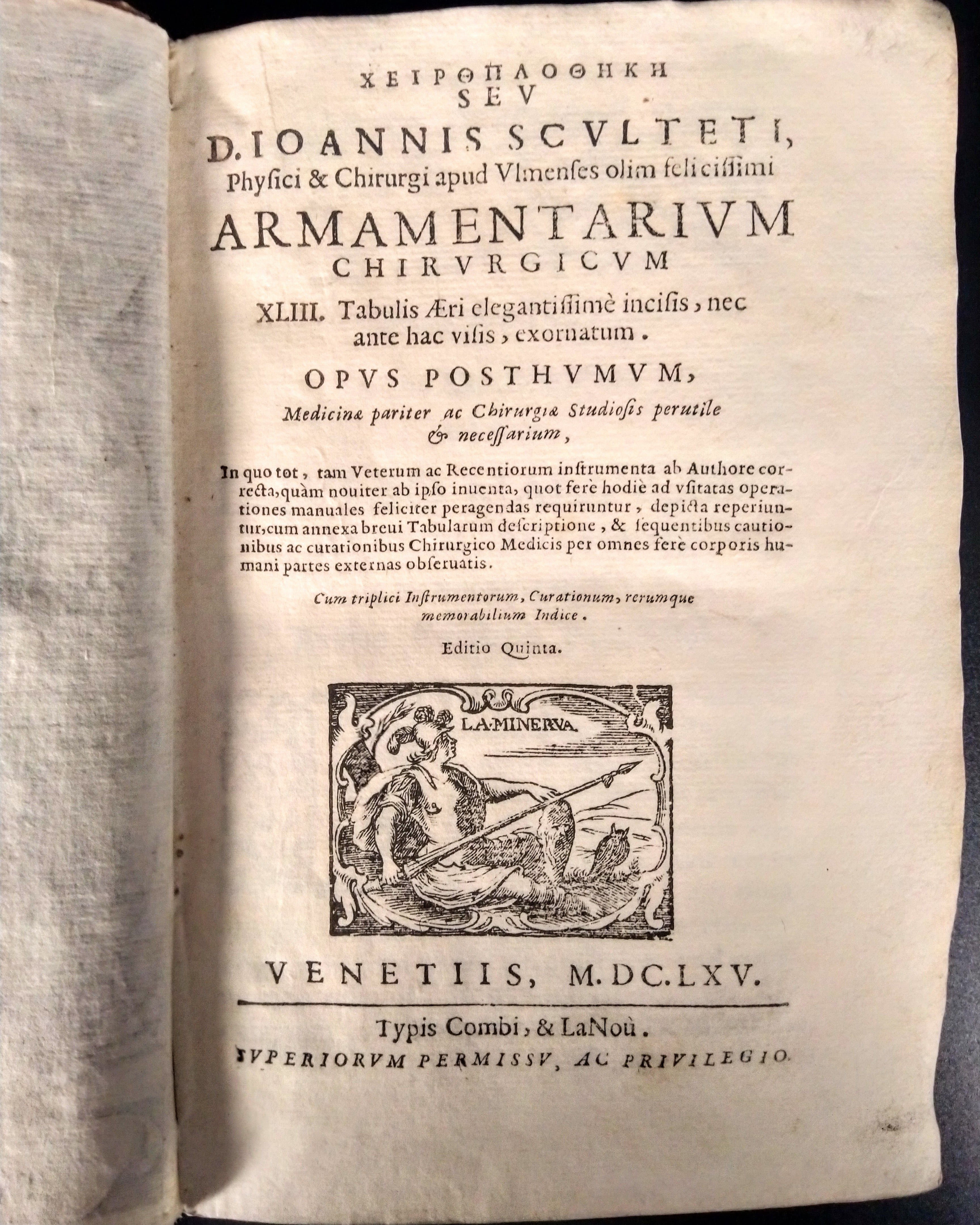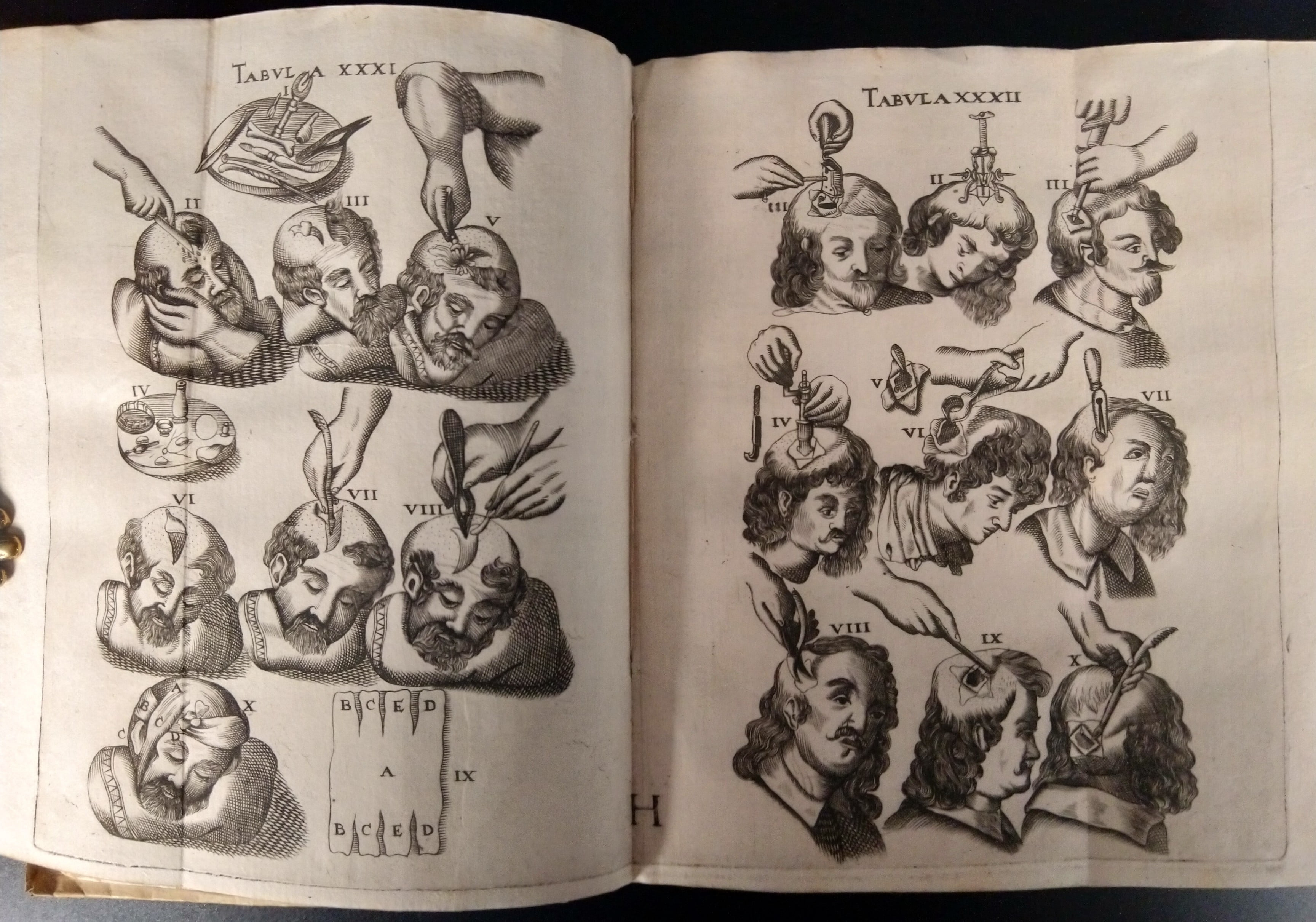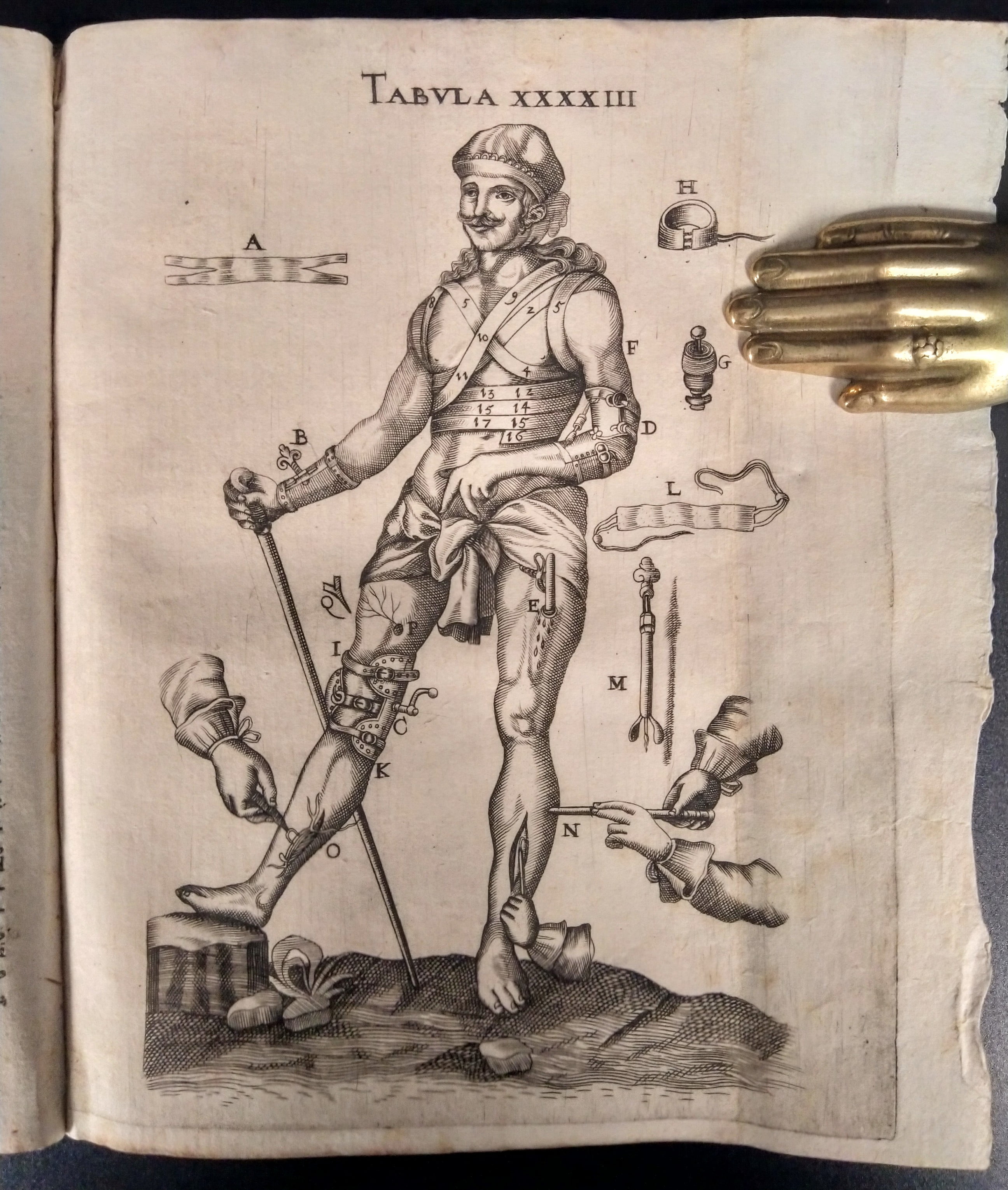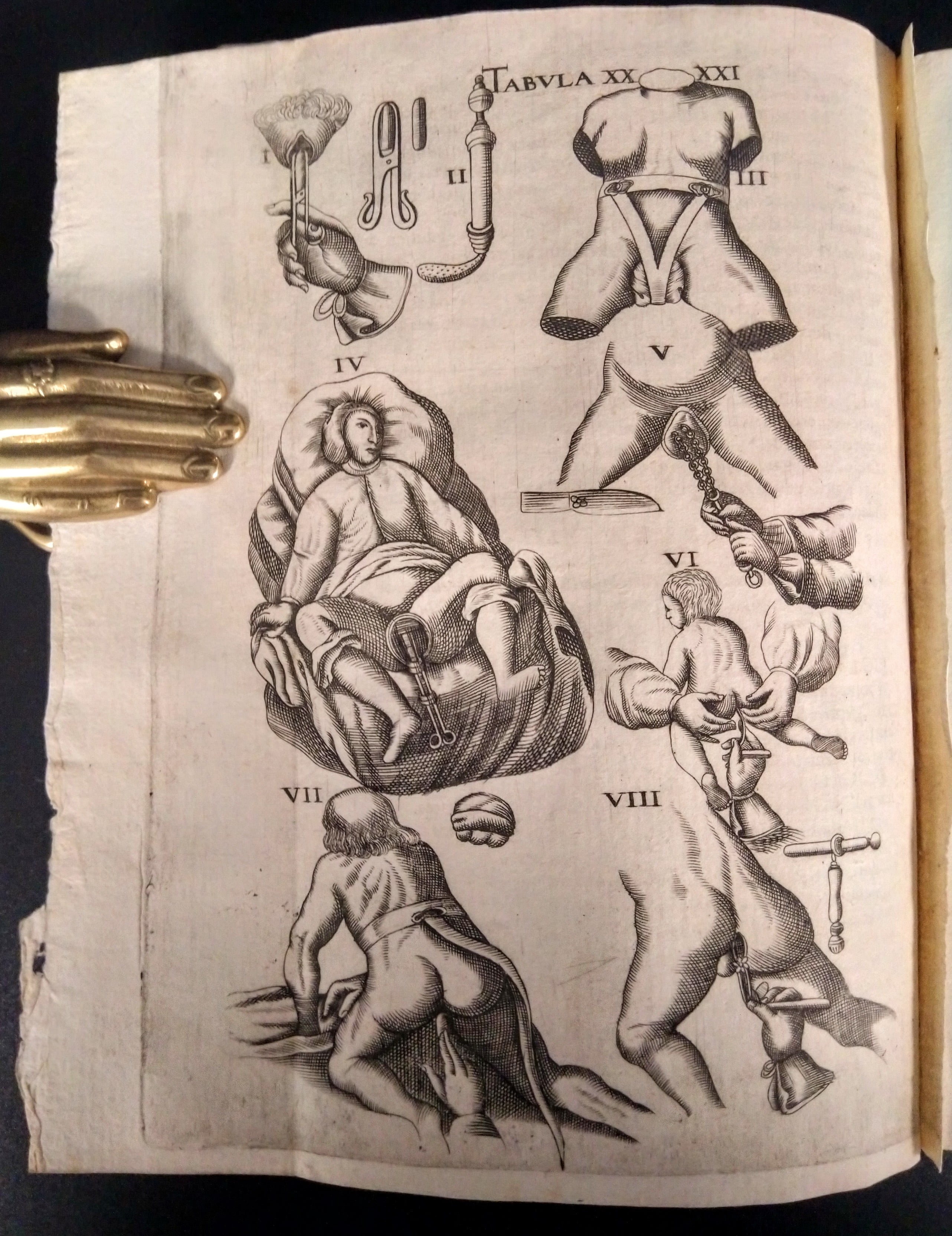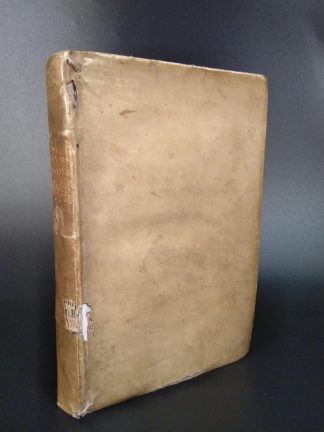SCHULTES, Johann
A FAMOUS SURGEON’S COPY
Armamentarium chirurgicum
Venice, typis Combi, & La Nou, 1665£4,950.00
8vo. pp. (xxiv) 166, 171-317 (xi), 44 plates included in pagination. Roman letter, with Italic. Engraved t-p (numbered as pl. 1) with scene of surgical operation and surrounding spectators, woodcut vignette to typographical t-p, 43 superb full-page or folding etchings of surgical instruments and techniques, wounds and bandages, decorated initials and ornaments. Few ll. lightly toned, ink splash to B1, paper flaw to outer margin of pl. 35, touching border but not engraving. An excellent, clean copy, in fresh impression on good-quality paper, in contemporary vellum, gilt-lettered spine, a little loss to upper joint (revealing printed waste lining) and lower edge of upper cover, C18 ex-libris of Bartolomeo Riviera to front pastedown.
This copy belonged to Bartolomeo Folesani Riviera (1722-95), professor of Surgery at Bologna in 1749-95. The C18 surgeon Antonio Scarpa, when still a student, wrote that at Bologna ‘surgical practice was undertaken with an intelligence uncommon in other parts of Italy because in the main hospital worked Riviera, former student of the famous Molinelli’ (Scarpa, ‘Epistolario’).
Excellent, superbly illustrated copy, of fresh impression, of this major, much translated surgical manual. It was first published posthumously in 1655, following the notes left by its author, Johannes Schultes (Scultetus, 1595-1645). A physician from Ulm, he received his doctorate at Padua studying with major surgeons like Fabricius ab Aquapendente and van de Spiegel. ‘Armamentarium’ was extremely successful, this being the fifth edition in ten years. It was produced and structured in size and content to facilitate practical use, and illustrations were paramount. The 43 superb engravings are as fresh as when they were printed. The first part is organized as a commentary to each plate: e.g., on surgical instruments like the forceps, ‘cannulae’ to treat intestinal ulcers and haemorrhoids and implements to extract a deceased foetus after a miscarriage; techniques to treat fractures, skull trauma, dental cavities, urinary tract stones (through operations portrayed with painful vividness) or amputated body parts, including breasts in case of cancer. The work is especially renowned for its proposed technique of hand amputation, which became the ‘routinely adopted method’ after the first edition (Weinzweig, ‘Mutilated Hand’, 9). The second part examines surgical operations ‘from head to heel’, based on notes taken by Schultes during his daily work—e.g., ‘In 1637, on January 9, at 7pm, Johannes Happelius from Ulm…32 years old…was wounded seven times’, followed by the specific location of the wounds and the treatment and medicines provided, day by day. A milestone in the history of surgery; a fresh copy of illustrious provenance.
Morton-Garrison 5571 (1655 ed.); Heirs of Hippocrates 293 (1655 ed.). A. Scarpa, Epistolario (1772-1832), ed. G. Sala (Pavia, 1938).In stock


